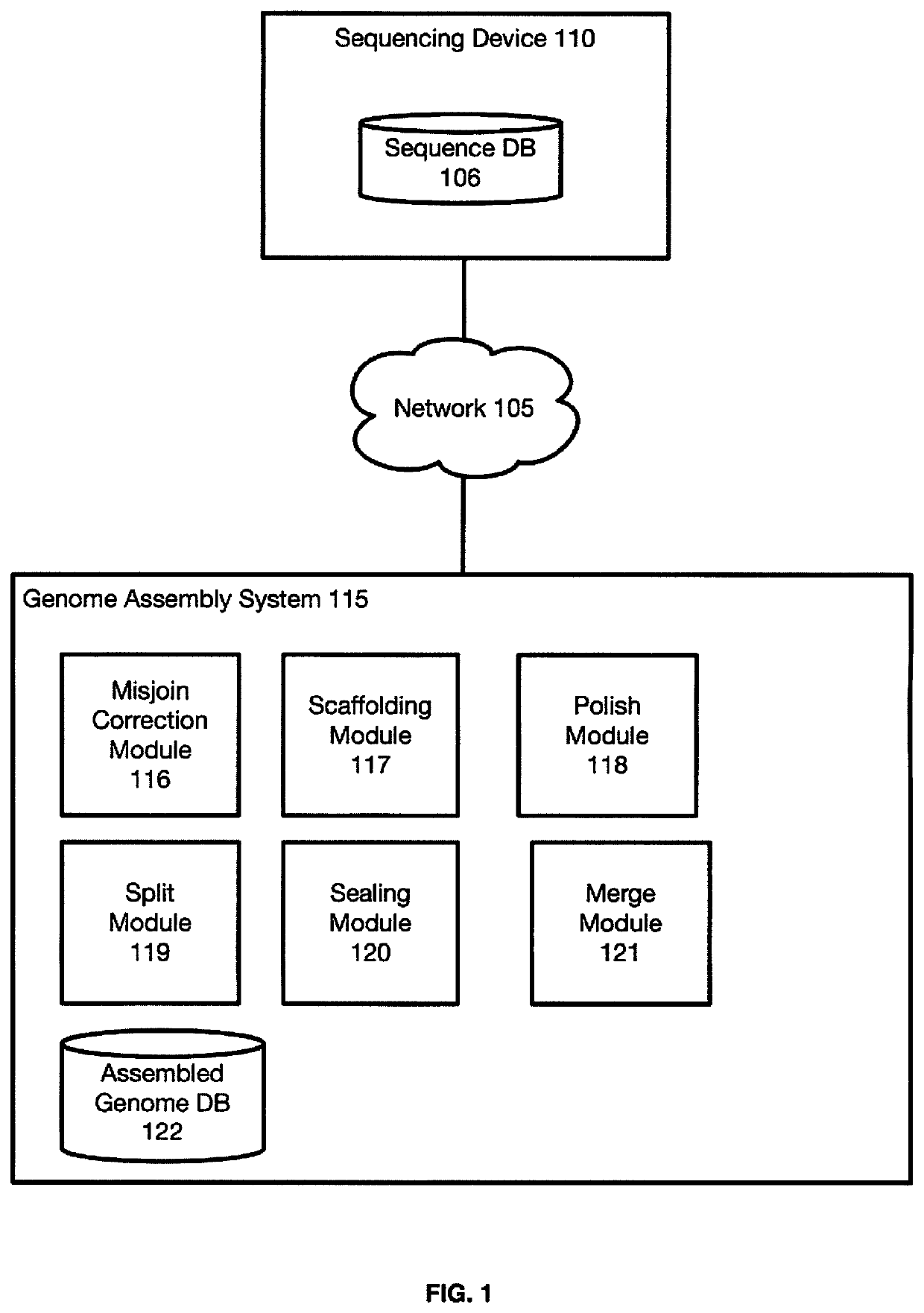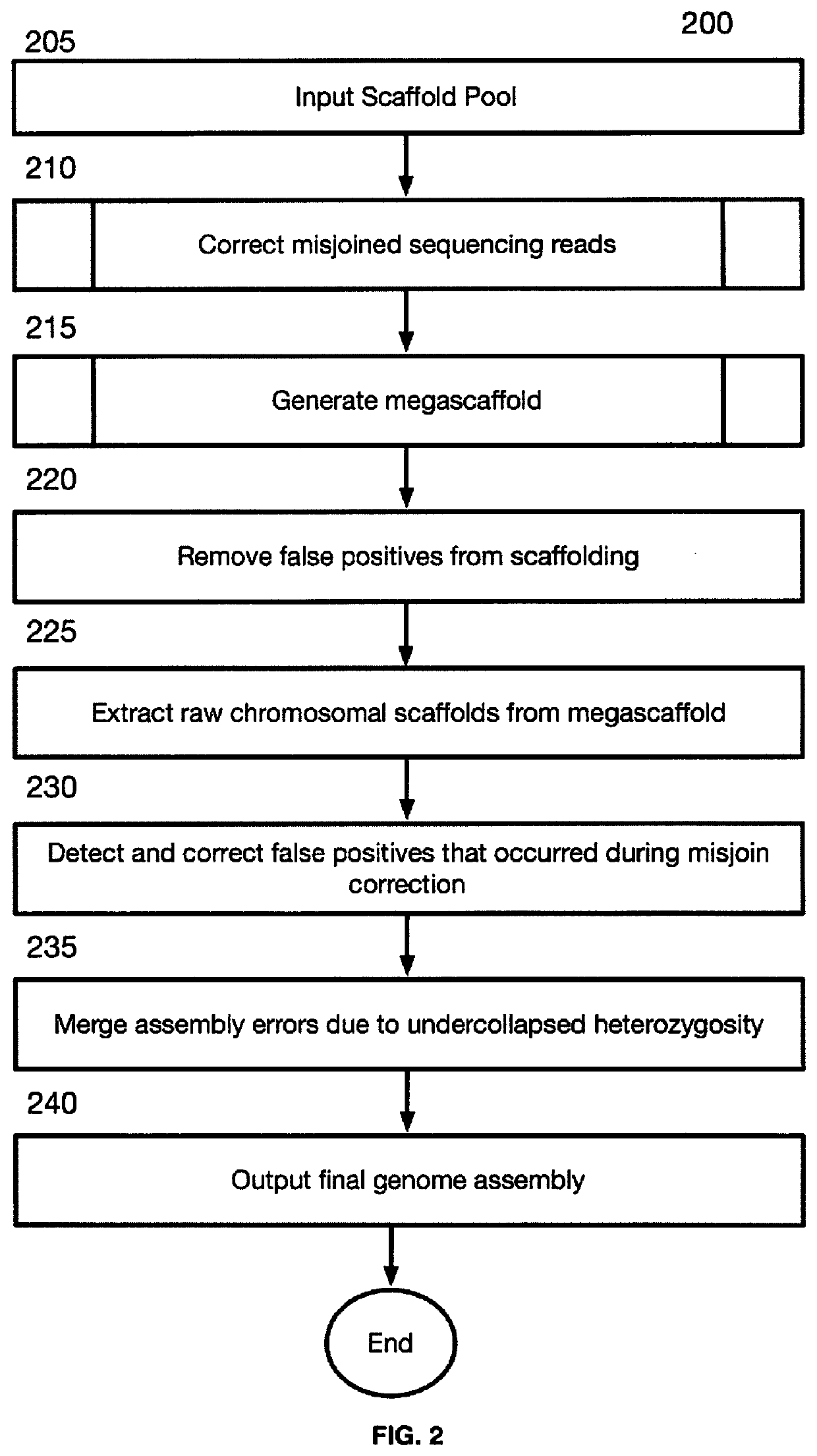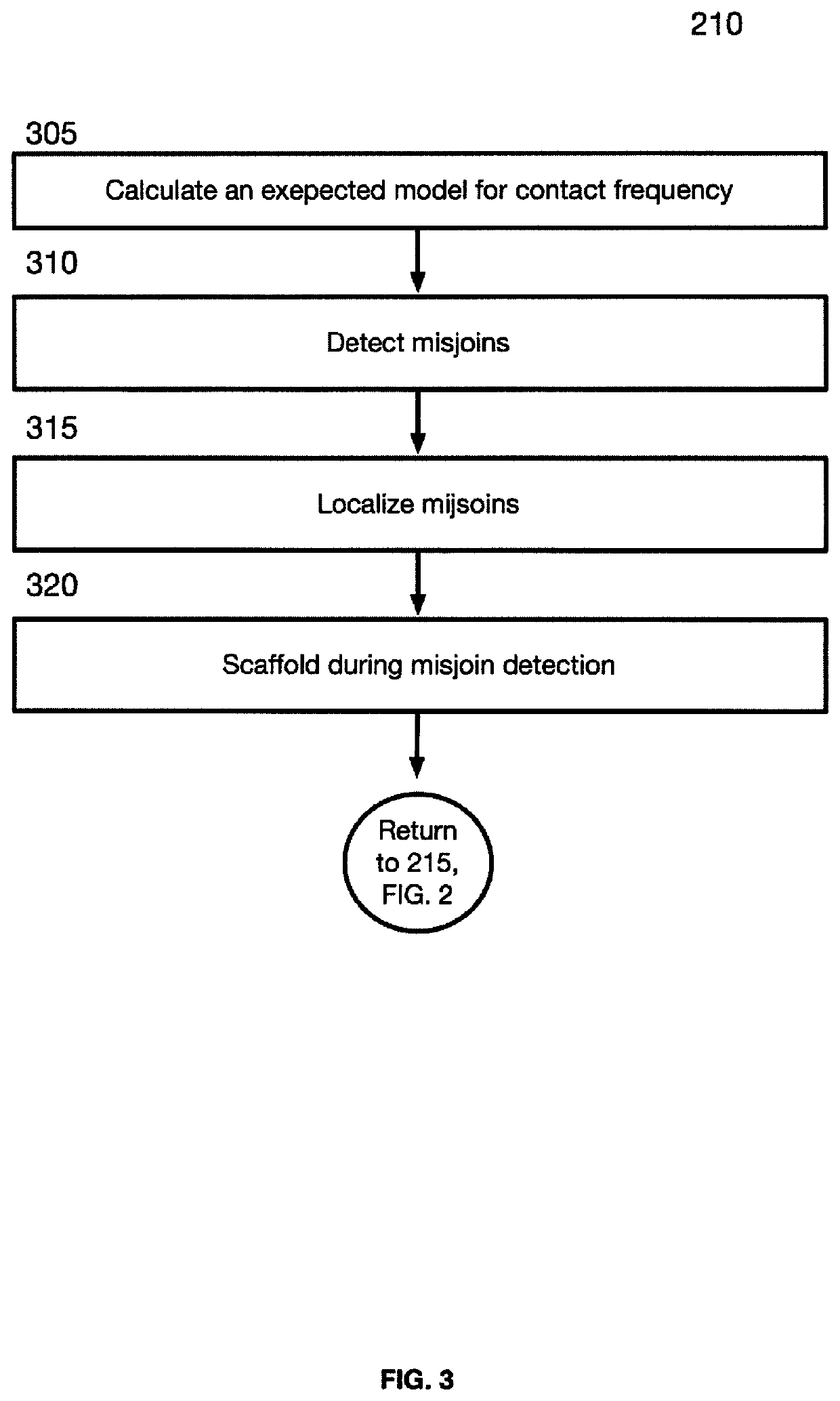Linear genome assembly from three dimensional genome structure
a genome and three-dimensional technology, applied in the field of linear genome assembly from three-dimensional genome structure, can solve the problems of inability to reliably analyze, the statistical approach to analyze the pattern of hi-c contacts as a whole could generate extremely long scaffolds, and the expected model derived from a particular experiment in a particular cell population in a particular organism cannot be reliably applied to all experiments in all cell populations in all species
- Summary
- Abstract
- Description
- Claims
- Application Information
AI Technical Summary
Benefits of technology
Problems solved by technology
Method used
Image
Examples
example processes
[0100]The methods illustrated in FIGS. 2-4 are described hereinafter with respect to the components of the example operating environment 100. The example method of FIGS. 2-4 may also be performed with other systems and in other environments.
[0101]FIG. 2 is a block flow diagram depicting a method 200 for sequence assembly from three-dimensional contact maps of sequencing reads obtained, at least in part, from DNA proximity ligation assays. Method 200 begins at block 205, where the misjoin correction module 116 receives input scaffolds. For the sake of generality, the inputs are referred to as scaffolds. The input may be a scaffold, that is sequence that are permitted to contain gaps, or the input may be contigs which comprise gap-free sequences. Input scaffolds may come from a variety of sources and technologies. In certain example embodiments the scaffolds are generated from Hi-C reads (5). In certain example embodiments, the input scaffold may be formatted as a fasta file. In certa...
example 1
nd-to-End Scaffolding of Short Contigs Using Hi-C Data
[0181]Disclosed herein is a computer-implemented method called LIGER which takes two inputs: (1) a Hi-C map for a species, and (2) a set of short contigs for the species. LIGER uses a greedy algorithm to join contigs that form frequent contacts with one another. It is able to orient the contigs by checking which contig-ends form contacts with one another more frequently. Because in situ Hi-C data is able to achieve such high-resolution, the rate of misjoins present after using the LIGER algorithm is extremely low: <0.03%.
[0182]Three mammalian assemblies using LIGER have been completed: Homo sapiens (human, NA12878), Saimiri boliviensis (squirrel monkey), and Canis lupus familiaris (dog, golden retriever).
[0183]By combining Hi-C and DNA-Seq as described above, de novo assemblies of all three species containing individual scaffolds spanning every single chromosome from end-to-end were generated. These assemblies demonstrate the fea...
example 2
-C Data to Derive, Order, Orient, and Modify Syntenic Contigs from a Closely Related Genome
[0184]The synteny relationships between species A and species B manifest very clearly in “cross-species” contact maps. Cross-species contact maps are generated as follows: to create an AB contact map, a Hi-C dataset for species A is aligned to closely related species B. From said alignment, breakpoints are very clearly observed in cross-species contact maps. They manifest as follows: suppose a single ancestral chromosome remained intact in zebra but has broken into two chromosomes in horse. Then a zebra / horse contact map will show intense interactions between the two chromosomes, manifesting as two bright off-diagonal blocks. Conversely, suppose the two ancestral chromosomes are joined in horse, but not in zebra. Then a zebra / horse contact map will show strongly depleted off-diagonal blocks in the intra-chromosomal square corresponding to the single horse chromosome (FIG. 17). Smaller-scale re...
PUM
| Property | Measurement | Unit |
|---|---|---|
| frequency | aaaaa | aaaaa |
| physical mapping | aaaaa | aaaaa |
| optical mapping | aaaaa | aaaaa |
Abstract
Description
Claims
Application Information
 Login to View More
Login to View More - R&D
- Intellectual Property
- Life Sciences
- Materials
- Tech Scout
- Unparalleled Data Quality
- Higher Quality Content
- 60% Fewer Hallucinations
Browse by: Latest US Patents, China's latest patents, Technical Efficacy Thesaurus, Application Domain, Technology Topic, Popular Technical Reports.
© 2025 PatSnap. All rights reserved.Legal|Privacy policy|Modern Slavery Act Transparency Statement|Sitemap|About US| Contact US: help@patsnap.com



